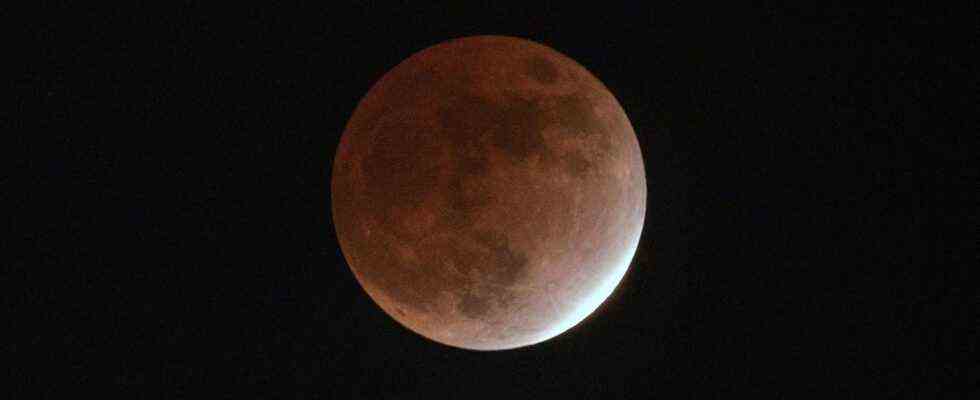It was the longest lunar eclipse in almost 600 years – and it cast a spell over large parts of the world on Friday. All over North and parts of South America, as well as Polynesia, Australia and Northeast Asia, it was possible to observe how half of the earth’s satellite was covered by the penumbra of our planet and how it turned red. The lunar eclipse lasted more than three hours and 28 minutes.
It was the longest partial eclipse since 1440 – around that time Johannes Gutenberg invented the printing press. It will not be exceeded again until 2669. For sky watchers, however, there will be an even more impressive spectacle to watch next year. Then the moon will be completely covered by the earth’s shadow during a total eclipse.
Lunar eclipse: reddish shimmer due to the refraction of light
The dramatic red tint during a lunar eclipse – whether partial or total – is caused by a phenomenon known as “Rayleigh scattering”. The shorter blue light waves from the sun are scattered by particles in the earth’s atmosphere. Red light waves, which are longer, easily pass through these particles.
“The more dust or clouds there are in the earth’s atmosphere during the eclipse, the redder the moon appears,” it said on the website of the US space agency Nasa. “It is as if all the sunrises and sunsets in the world are projected onto the moon.”
Unlike solar eclipses, observers do not need any special equipment for the lunar spectacle. Binoculars, telescopes or the naked eye offer a good view of the spectacle – provided that the weather plays along and clouds do not obscure the view.

